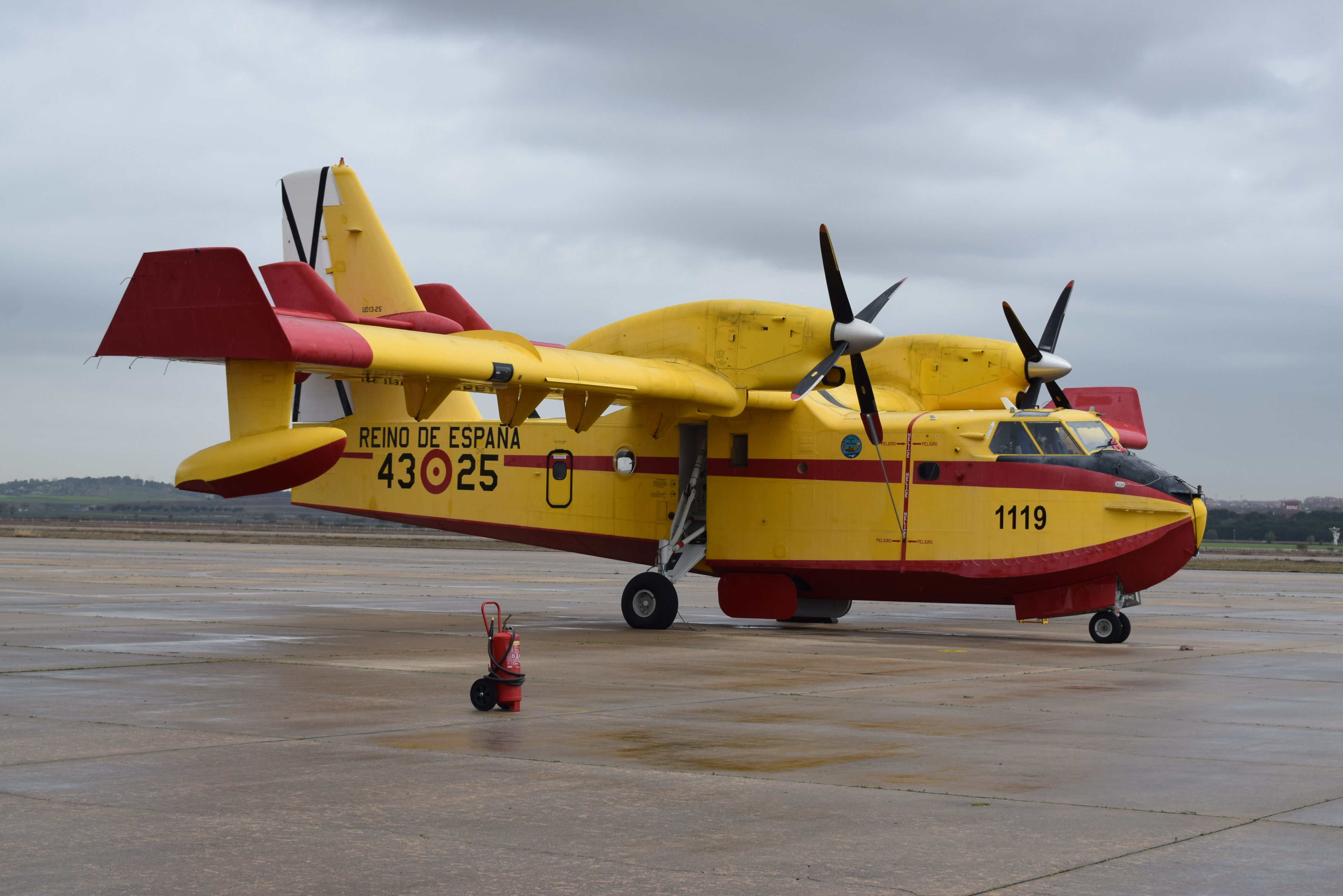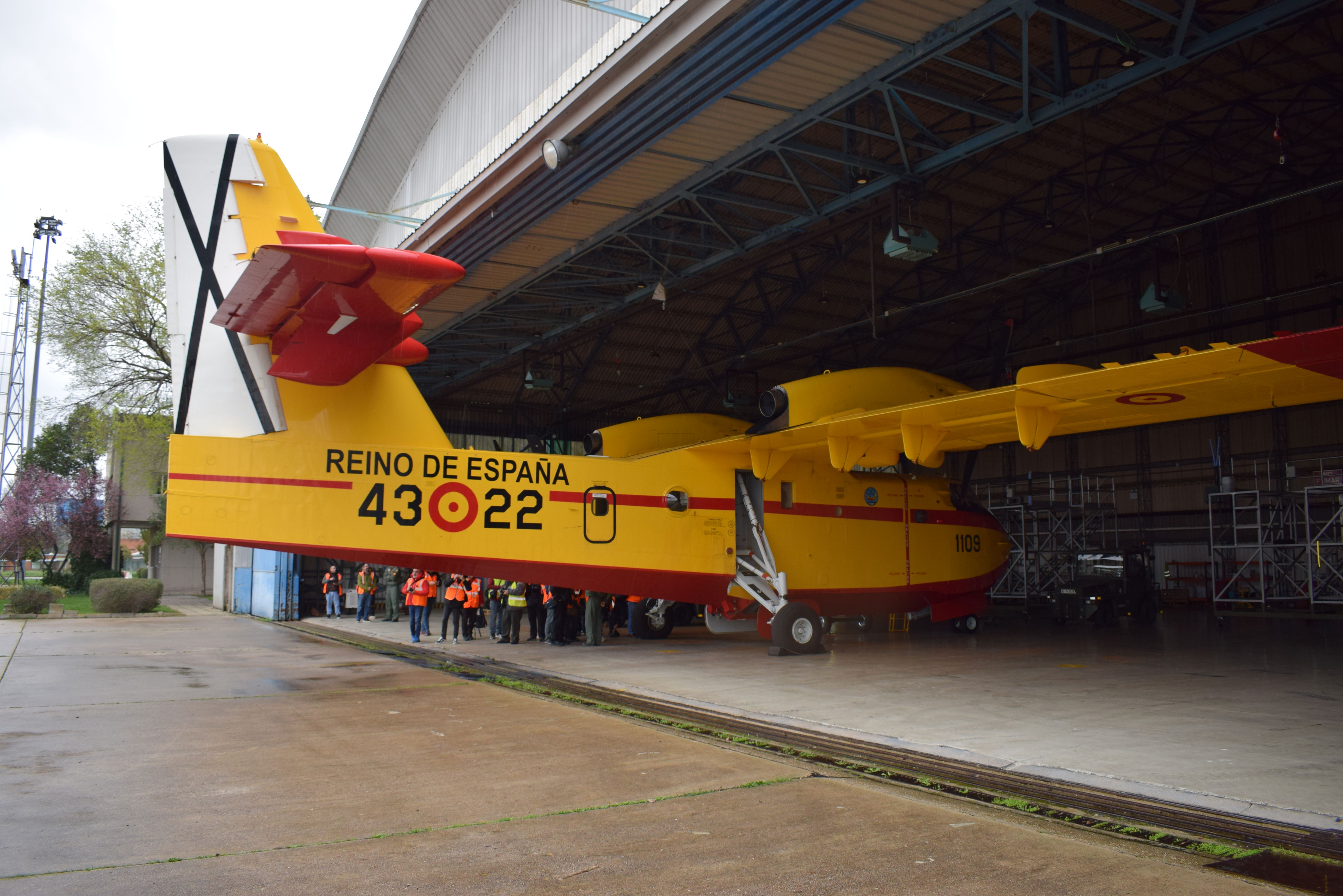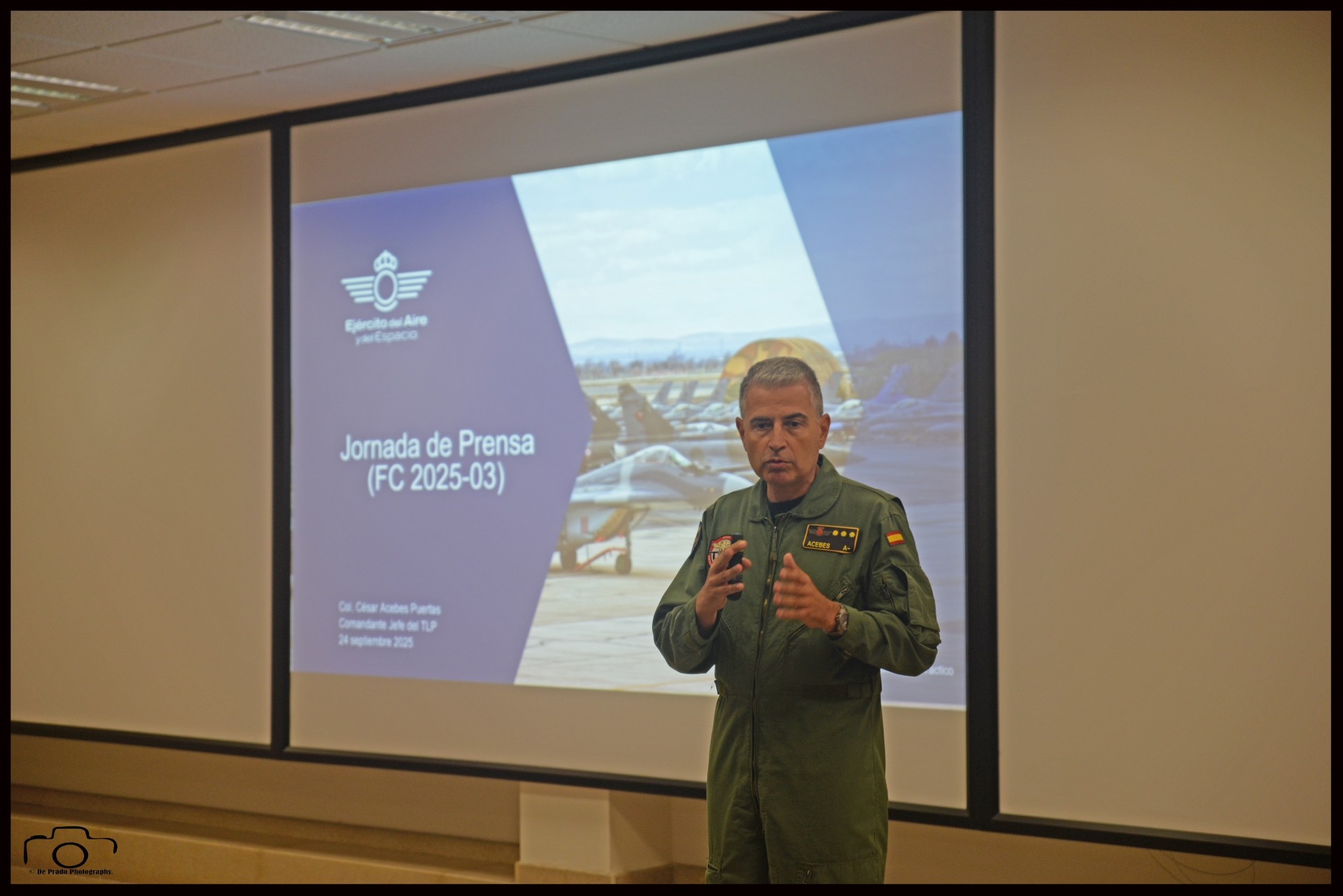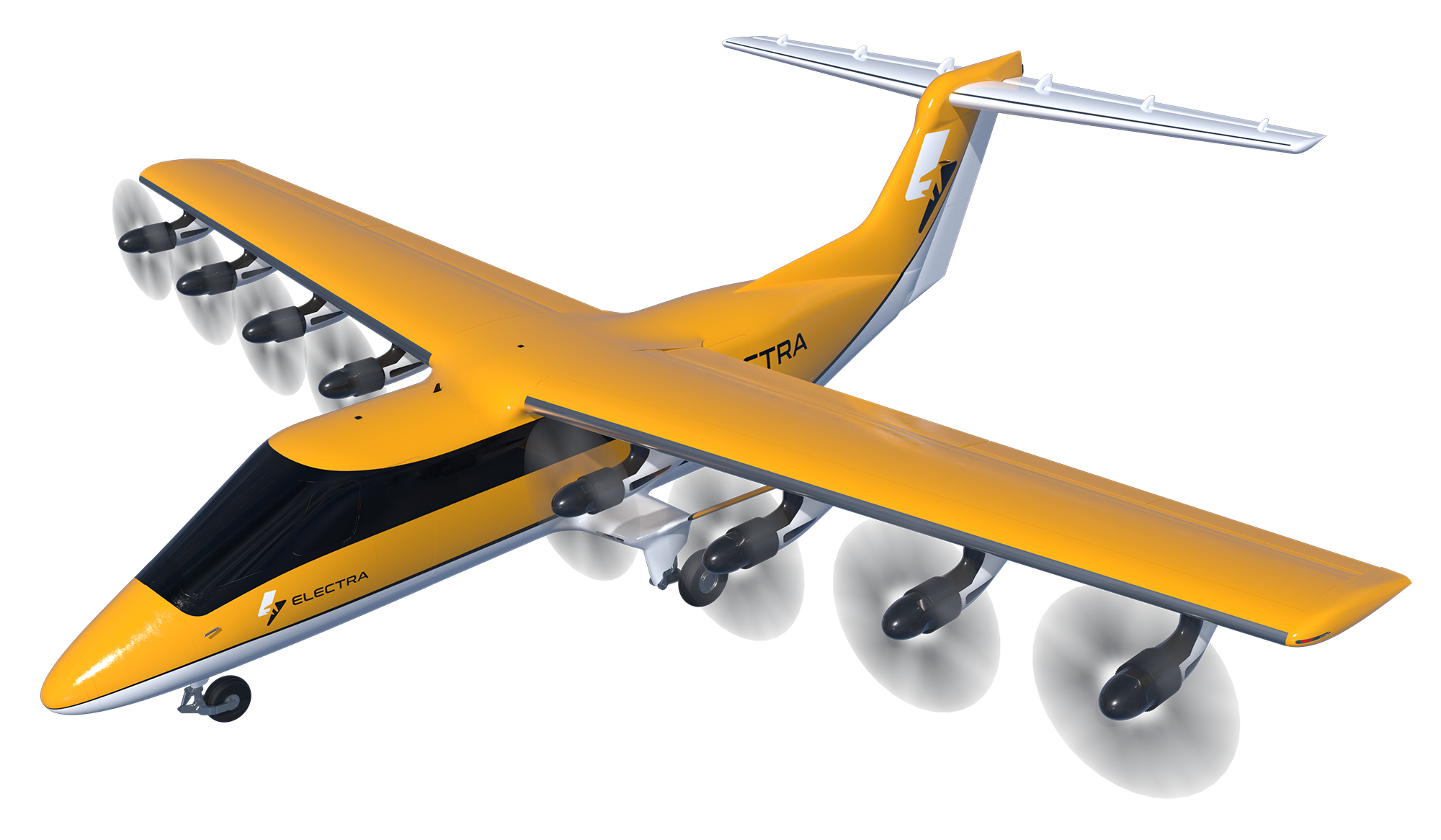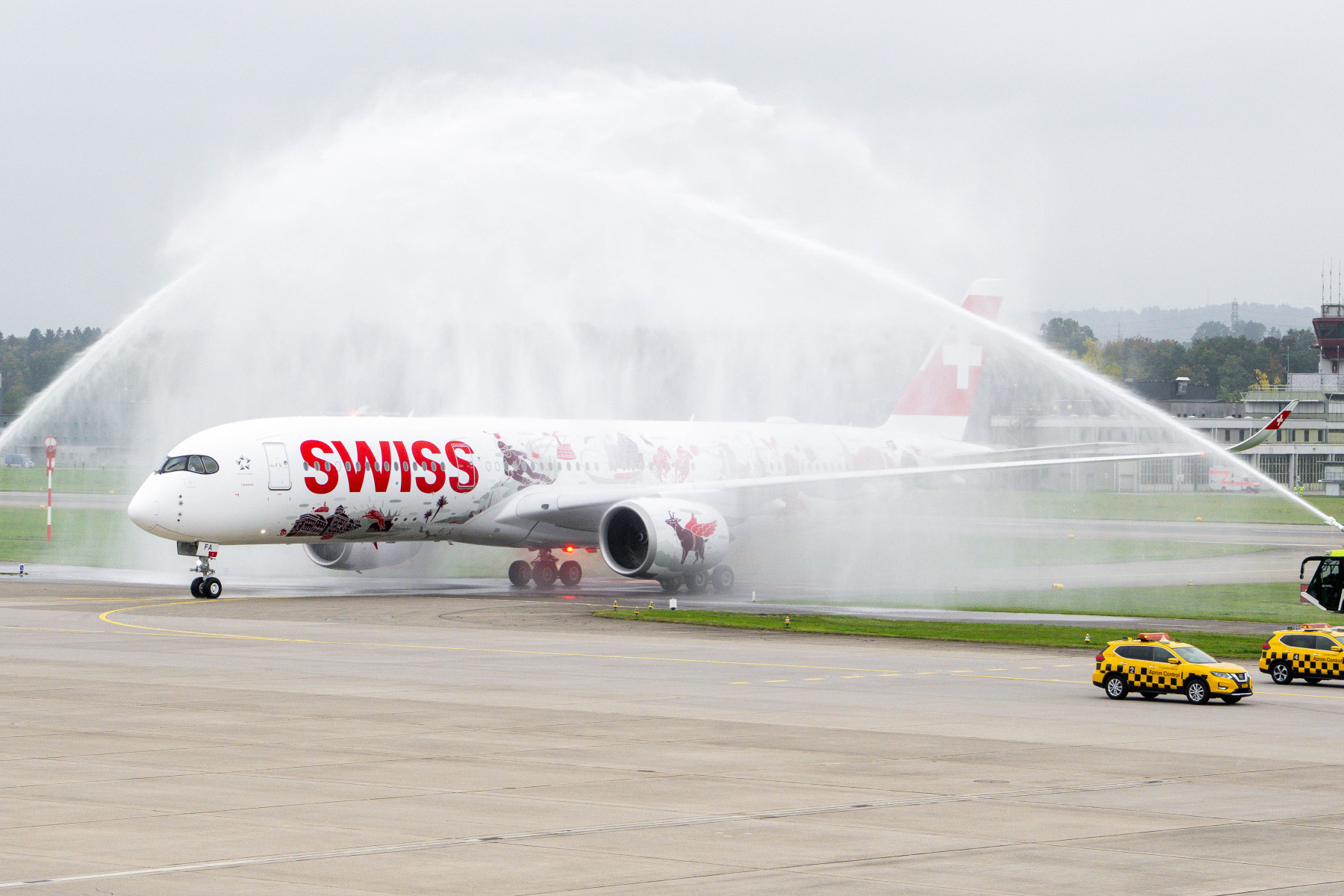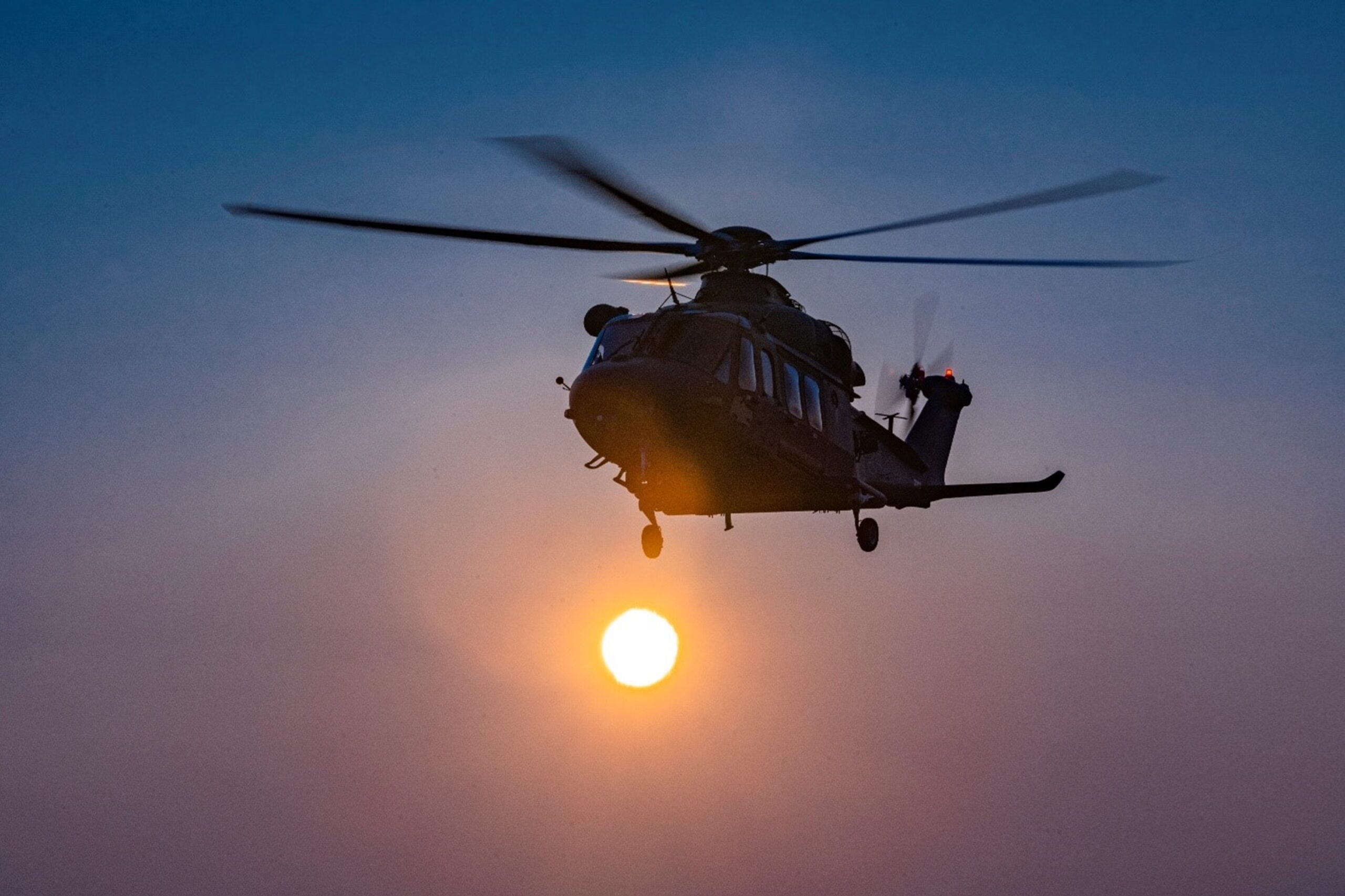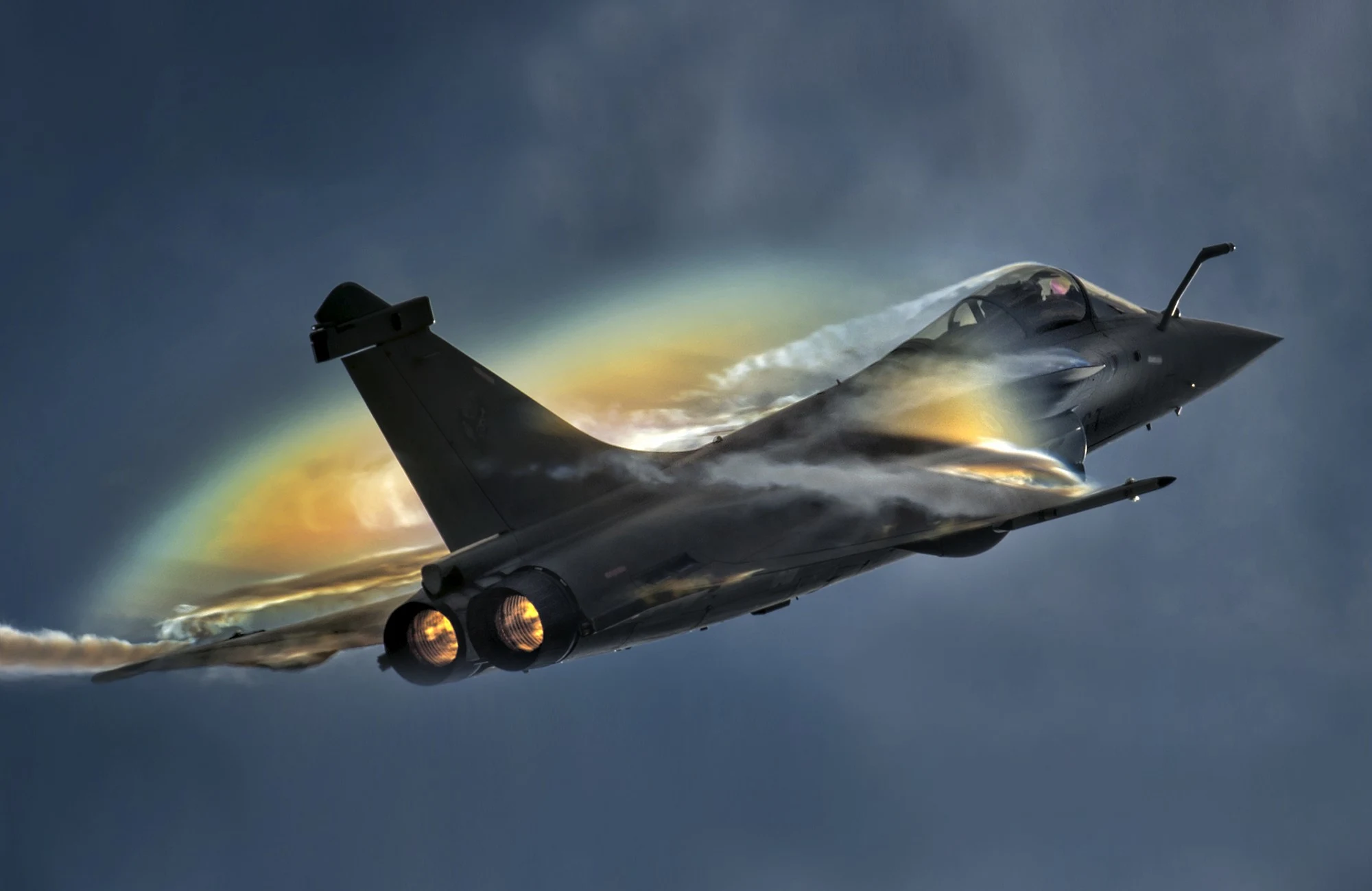Text & Photos; Pere Vilalta Torné.
Last Thursday, March 20, I was able to attend an event held by the Aire association, this time featuring a visit from the 43rd Air Force Group, based at Torrejón Air Base, Madrid.
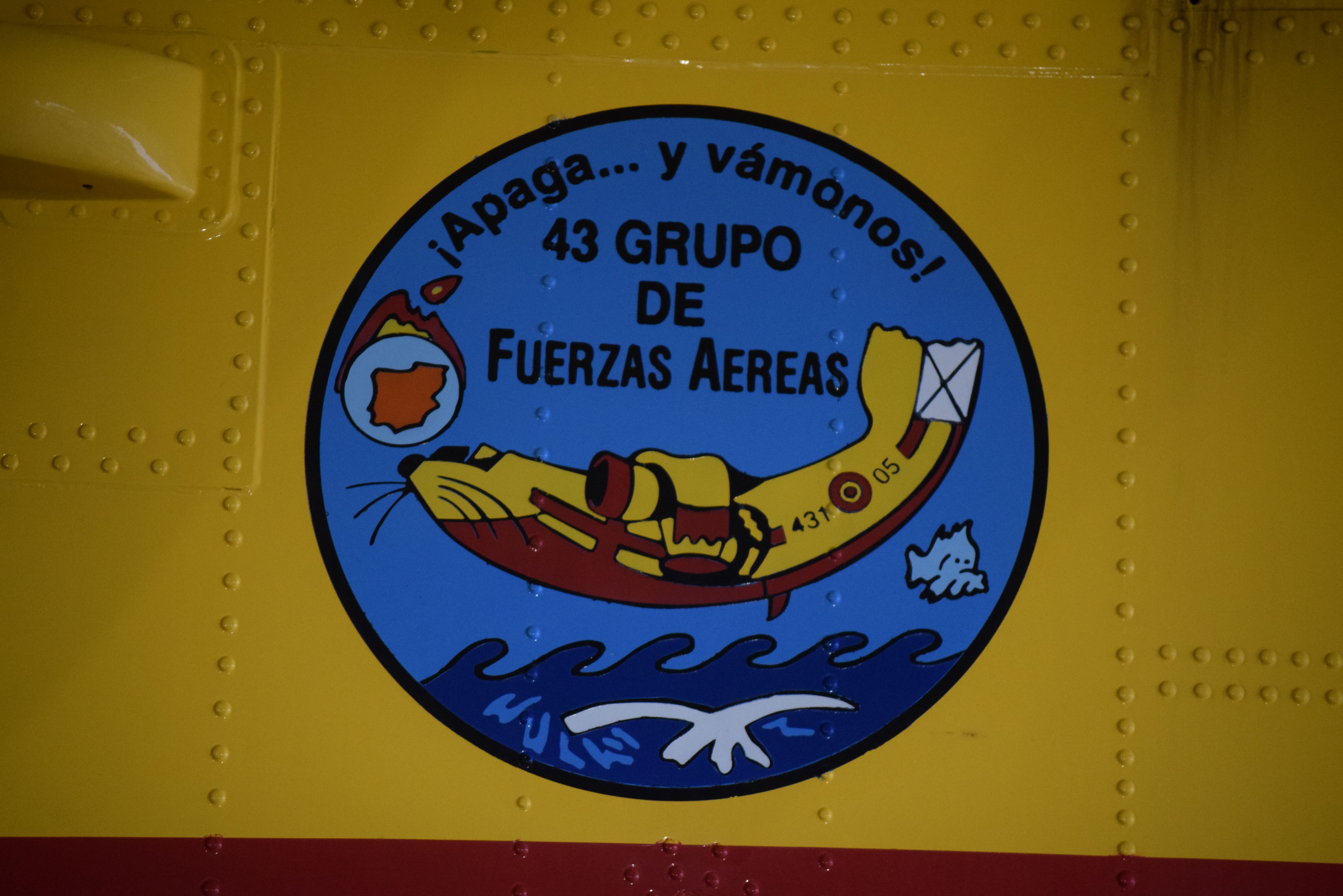
We were summoned at 9:30 a.m., and after a quick identification and access control, we were able to access the Wing’s facilities at the Base. Located at one end of the runway, it consists of two buildings and two hangars, one of which was the one used by the former 47th Group. Immediately after the introductions, we entered the building and went up to the briefing room, where we were shown a video about the history of the unit and its activities, training, and instruction.
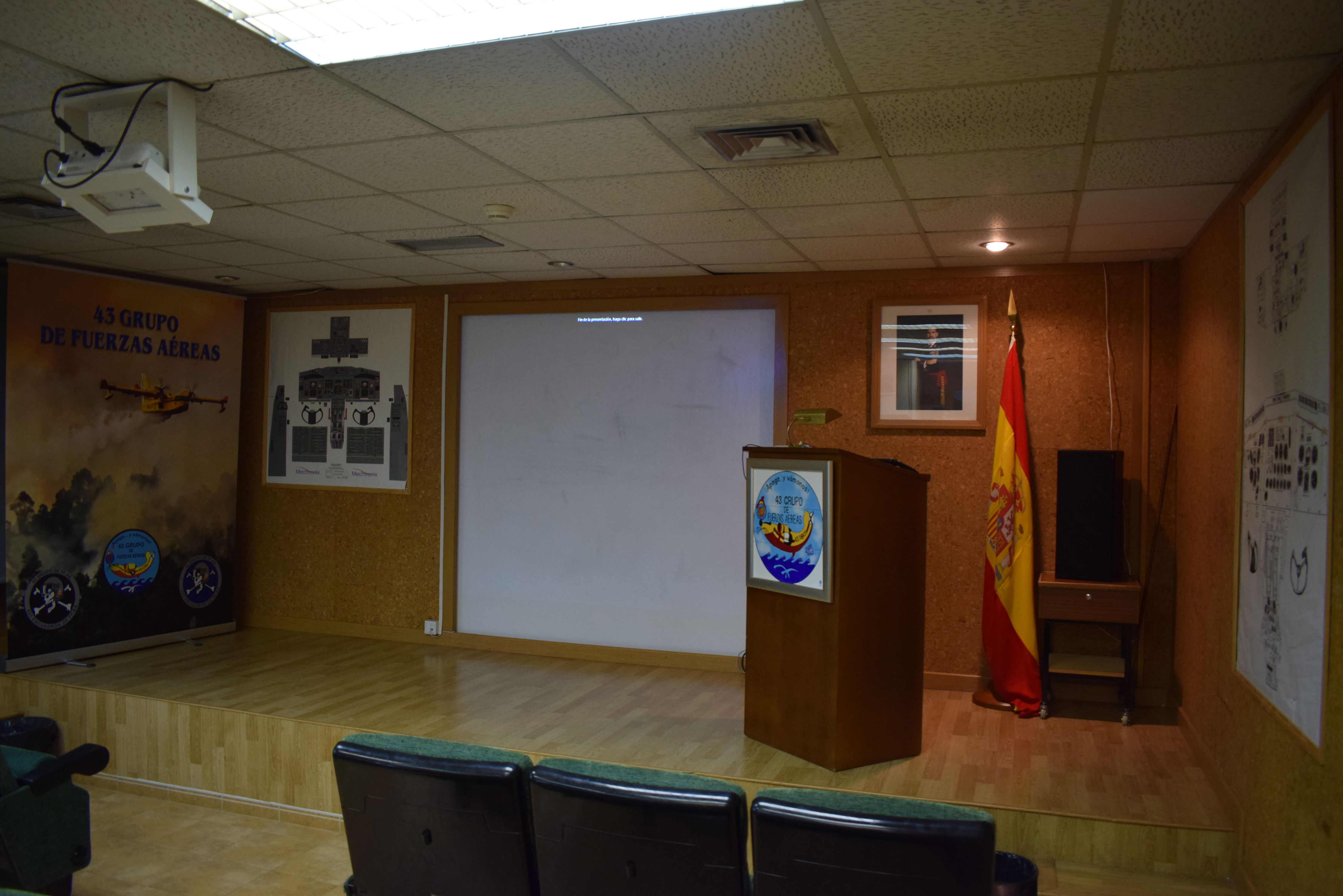
Group 43 has 14 aircraft, 10 re-engined former CL-215Ts and four CL-415s that arrived later. Apparently, there is already a plan to acquire a new aircraft at the European level, the Canadair DHC-515, with Spain expected to receive seven units.
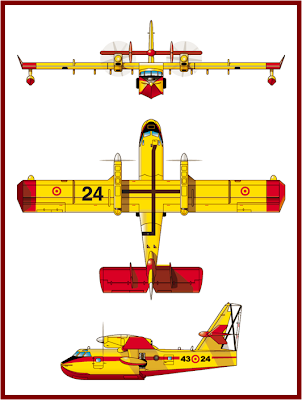
Group 43’s primary mission is firefighting, but it also has a lesser-known secondary role: search and rescue.
The unit is already working to have all its equipment ready for the 2025 campaign, both in terms of aircraft and personnel. The unit has around 150 men and women, who will be distributed among the six bases assigned to fight the fire starting in June: Santiago, Torrejón (Madrid), Talavera (Badajoz), Málaga, Zaragoza, and Pollensa (Mallorca), where they can reach the fire within a maximum response time of one hour. During the winter, two aircraft are prepared and ready to go on missions from the Torrejón base.
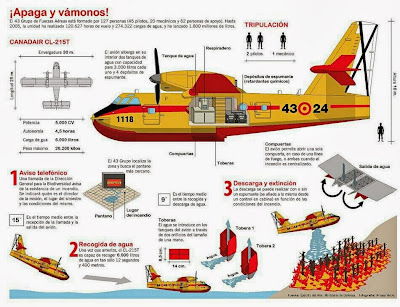
https://batallont15.blogspot.com/2013/10/como-funciona-el-hidroavion-canadier.html
The endurance of these aircraft is around 4.5 hours, hence the fuel/water load ratio, prioritizing fuel loading, and shifting to loading water in the vicinity of the fire, thus gaining more time to work on the fire. The maximum water load they can collect is 6 tons, which they usually drop at once, even if they have two or four hatches, depending on the aircraft. And the space they need to clear to collect the water is about 440 m, about 12 seconds. These operations, both approaching the reservoir and collecting water, are usually done visually, looking for reference points where you can see the wind direction, water depth, and the conditions at the time of landing, whether there are logs or other obstacles or people in the vicinity, and collecting the water. It is true that before, during the winter, there is the task of visiting these potential water extraction points to update the data available.
Group 43 doesn’t use retardant; it normally uses water to fight a fire. It’s a direct attack, unlike larger aircraft that carry more cargo, which are usually used for indirect attacks.
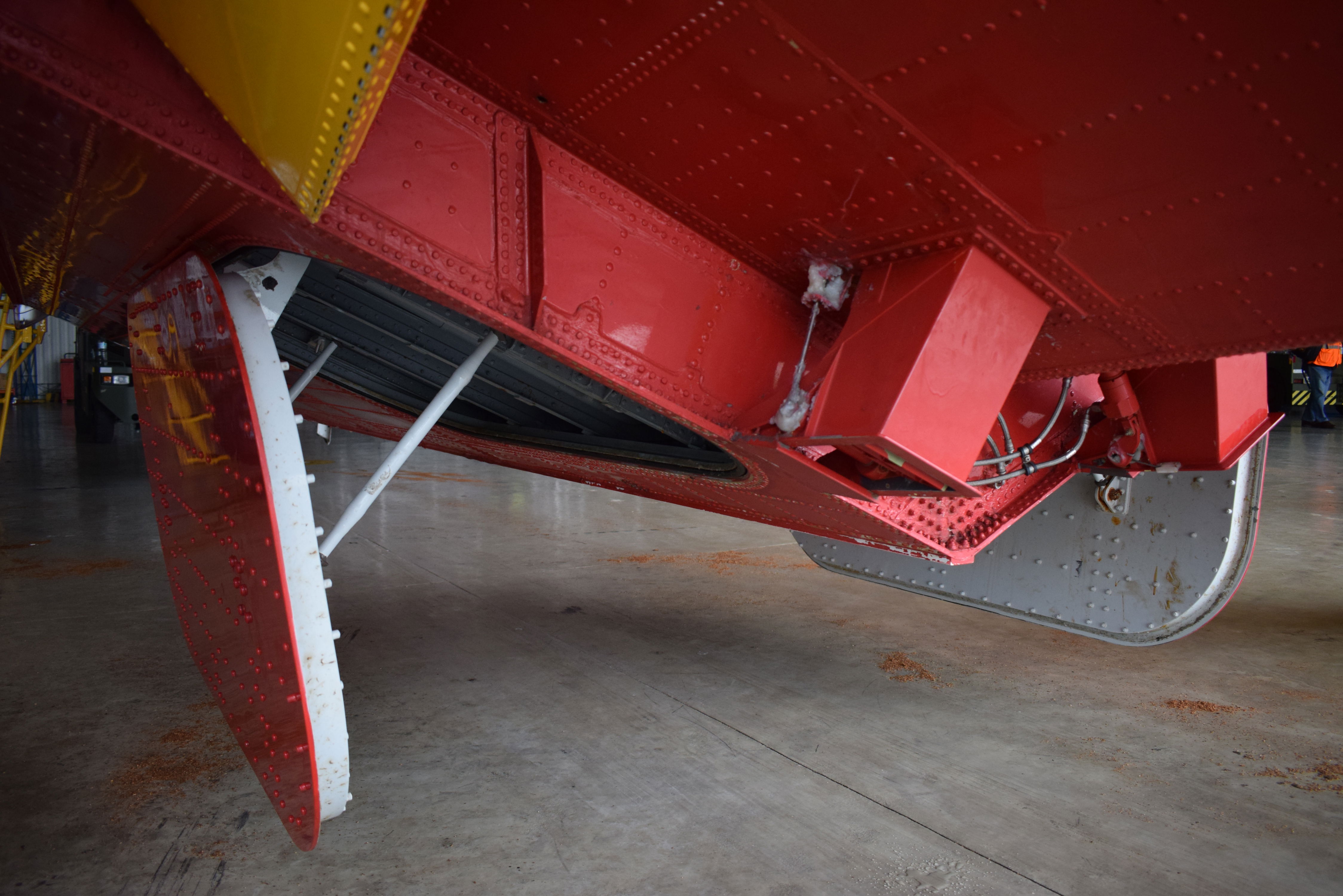
The water collection and release stage presents the greatest risk of accidents. These are the moments in which the highest accident rate has been recorded. This type of aircraft, the Canadair CL-215, has been built with approximately 220 units, of which 20% have been lost. And the loading and unloading process is generally where the most accidents have occurred. This is due to the combined circumstances of flying at low speeds and altitudes, as well as sometimes with poor visibility. Fires often involve strong winds, which, with higher temperatures, mean more turbulence. It should be noted that there has not been a single fatal accident in Group 43 since 2003.
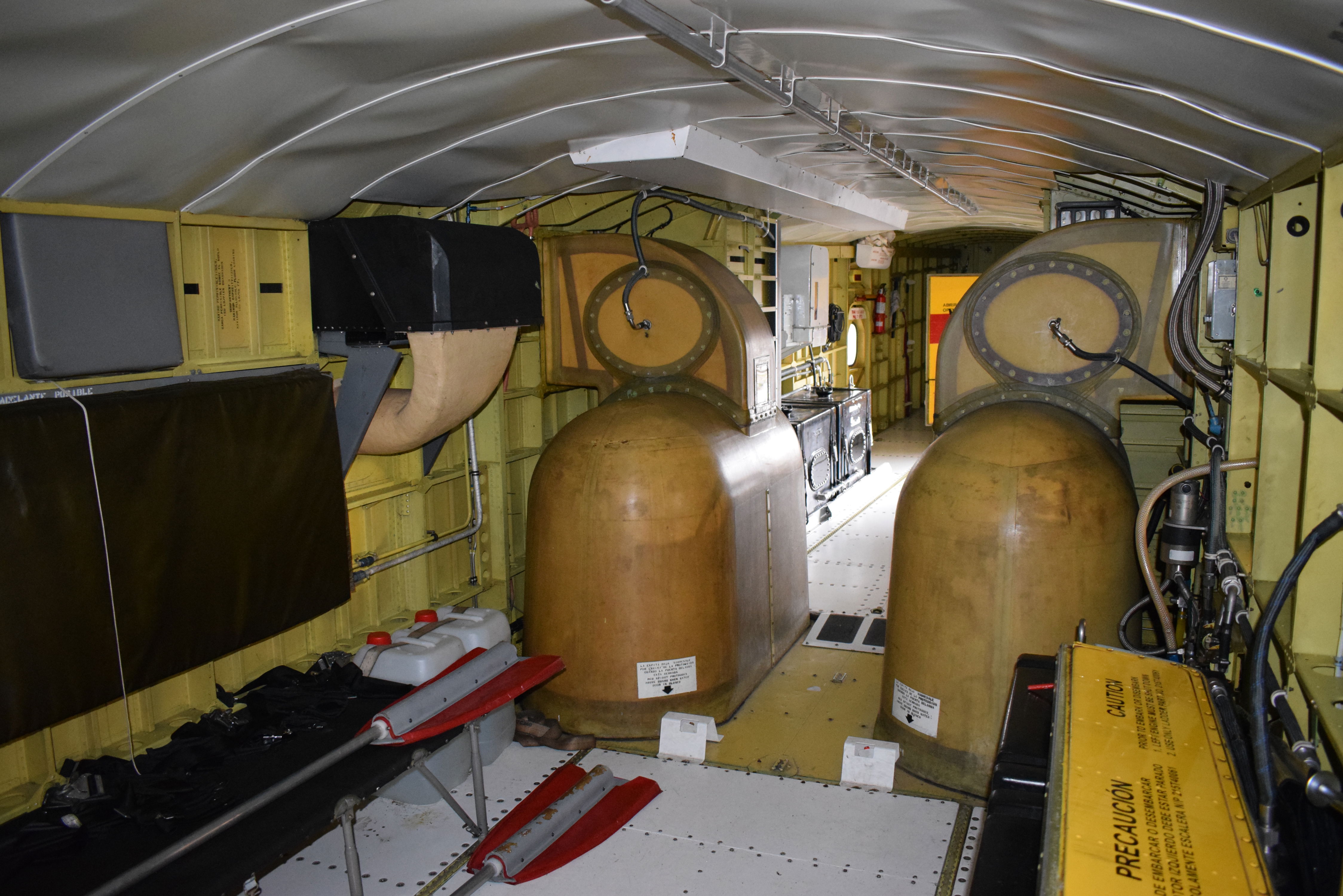
The crew of Group 43 consists of two pilots and a mechanic on board, unlike other countries using the CL-215/415. Similarly, firefighters are assisted by a fire director, who coordinates the various aerial resources in the area from a helicopter and maintains contact with ground personnel to attack the most critical areas at any given time.
Another danger that can occur in swamps on a calm day is the mirror effect, as the pilot cannot see where the water is, and their sense of depth is lost.
The CL-215 is an aircraft not equipped with digital equipment or complicated avionics. The instrument panel is analog, so its range of action in a fire is from sunrise to sunset. With so many potential obstacles at low altitudes, it’s impossible to collect water, and dropping it could cause it to collide with trees, electricity pylons, or other obstacles. What it does take advantage of is to work until the last ray of light and return to base at night.
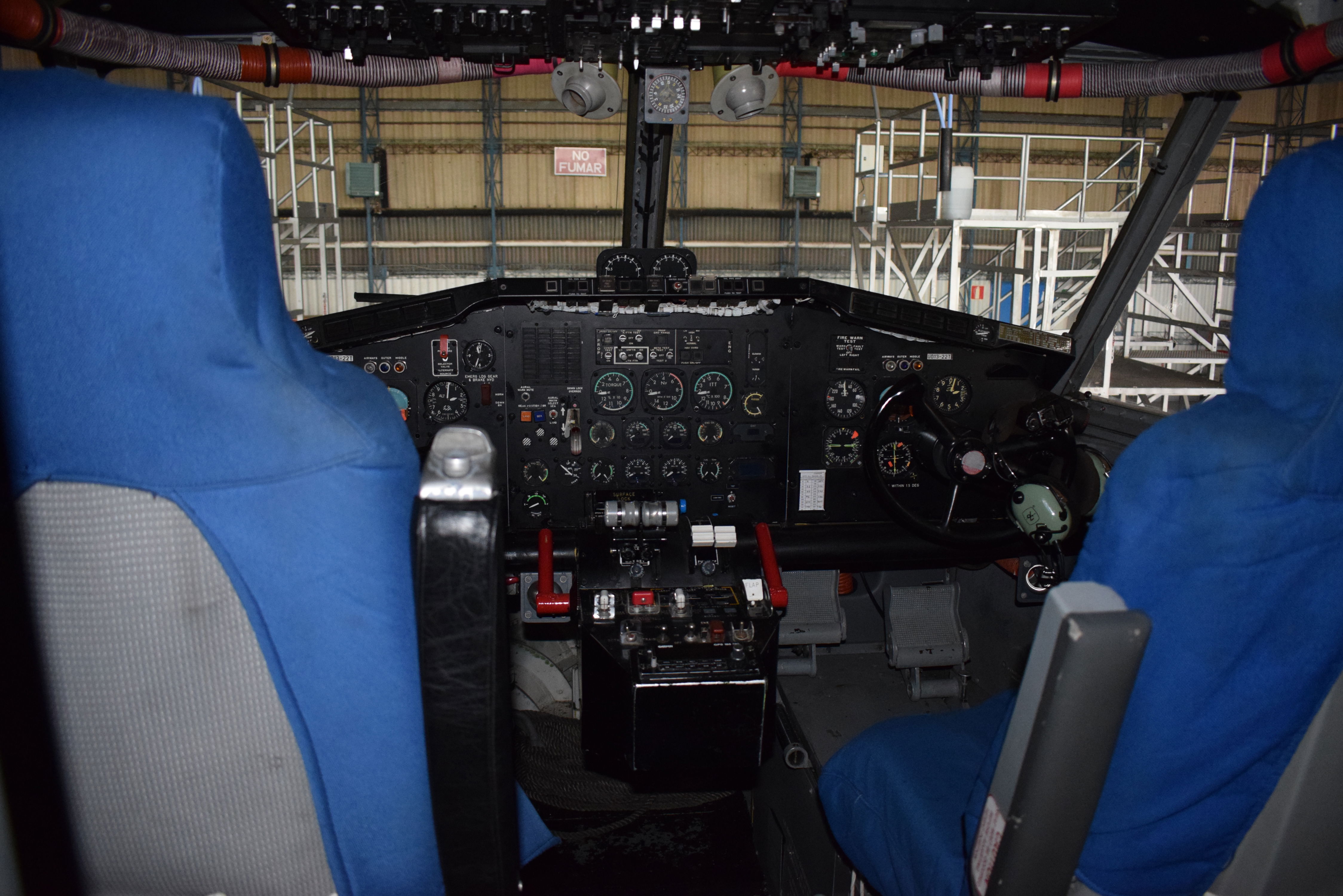
A great job, which makes its motto, a grateful job.
